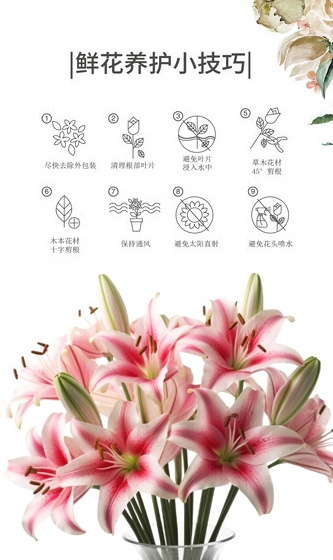蔷薇科植物的起源和进化
关键词: 蔷薇科, 起源, 演化
Abstract:
Rosaceae. consisting of about 126 genera and 3200 species, is widely distribu-
ted in warm temperate and subtropical regions of the Northern Hemisphere, while more
than half of the genera are Asiatic and more then 80% of the total number of Asiatic
occur in China (Table 1). In this paper, the origin and evolution of Chinese genera is
discussed mainly. The principal tendency of the whole family is also described from
the point of view of evolution.
First of all, the systematic position of Rosaceae in Angiospermae is reviewed. Ac-
cording to the records of paleobotany, rosaceous plants occurred first in the Tertiary,
from the early period of Eocene (genera such as Spiraea and Prunus) to the late period
of Miocene (e.g. Crataegus, Malus amd Rosa). They have quite a long history in geolo-
gical data. Where has this big and old family originated and what steps does it stand in
the long course of evolution of flowering plants? There are several opinions and ex-
planations by different authors. In this paper, a general survey of the six prevailing
classical systems (Table 2) is made to give a brief idea of the position of this family
in the Angiospermae and of the relationships between the subfamilies and also the rela-
tionships between different genera in each subfamily. At the end of this paper, an at-
tempt is made to analyse and sum up the major evolutionary tendency of the whole fa-
mily.
As generally condidered, Rosaceae originated from Magnoliales, and woody plants
of the family still hold a dominant position. For instance, subfamily Spiraeoideae con-
sists of only one herbaceous genus (i.e., Aruncus) and subfamily Rosoideae only a few
herbaceous genera. All of these herbaceous genera are derived from the closely related
woody genera of the same subfamily.
In the course of evolution of Angiospermae, Rosaceae stands at the initial to the
middle stages of development. All parts of plant body in this family are at the chang-
ing and developing stages, with carpels, fruits and inflorescences being the most active.
The primitive types in this family, such as the members of subfamily Spiraeoideae,
usually have 5 and free carpels, the number of which are either reduced to 2-1 or in-
creased to 10-numerous. They have different levels of union and are either completely
free from each other or coherent at base. The carpels usually occur on the upper part of
the receptacle, because the shapes of receptacle are variable, sometimes disk-shaped, cup-
shaped, tube-shaped or even bottle-shaped. In the last case carpels grow inside the rece-
ptacle. Thus the position of carpels has changed from superior to inferior through half-
superior.
In accordance with the development of the carpels, various kinds of fruits are produ-
ced. The primitive types of fruit are follicles, with dry, dehiscent carpels opened along
different sutures. The next step, the carpels have developed into an indehiscent, I-celled
and l-seeded fruit, the so-caned achene. In different genera, the achenes have different
coat types and appendages to facilitate dispersing the seeds. Some of the achenes grow
upon the fleshy receptacle (like strawberry) and some of them inside the fleshy rece-
ptacle (like rose). Sometimes a few carpels are united with the receptacle and develop
into a pome (like apple and pear). Another direction of the fruit development is the
single carpel with fleshy exocarp and mesocarp, and a bony endocarp, then becoming a
drupe (like peach and plum).
In addition to fleshy receptacle of thickened fruit coats, they usually have showy
colour, fragrant smell and also plenty of sugars, acids, vitamins, etc. which are edible
and attract animals and human beings to assist the dispersion of seeds.
In this family, there are various types of flower arrangements, both indefinite inflo-
rescences including raceme, umbel, corymb and panicle, and the definite inflorescence,
such as solitary flower, cyme and compound cyme. In the evolution course, they tend
to change mostly from multiflowered compound inflorescence towards few-flowered sim-
ple inflorescence, and finally becoming a solitary flower: simultaneously with the decre-
asing of number of flowers on the inflorescence, the increasing of size of petals, which
become very showy for attraction of insects so as to guarantee pollination and fertiliza-
tion of the plants concerned. Another tendency, if the bisexual flowers change to uni-
sexual, either monoecious- or dioecious-polygamous, then they form a dense spike which
is beneficial to cross pollination. The abundance, diversity, and wide range of distribu-
tion of the species and genera of Rosaceae are considered mainly resulted from their
highly developed reproductive organs.
Key words: Rosaceae, origin, evolution
相关知识
叶绿体基因组序列的进化分析揭示了蔷薇科独特的进化历程以及果用樱桃的独立起源
植物的起源和进化过程
蔷薇科委陵菜族的系统进化与生物地理学研究
染色体倍增与花的起源和进化
大规模比较进化基因组学揭示植物新性状起源和演化史
植物的进化和品种改良
蔷薇科植物有关介绍
植物花色的起源
遗传发育所等揭示被子植物自交不亲和性起源、丢失和重获的高度动态进化机制
木兰科(Magnoliaceae)的起源、进化和地理分布
网址: 蔷薇科植物的起源和进化 https://www.huajiangbk.com/newsview2352145.html
| 上一篇: 蔷薇花的前世今生:刺与瓣交织的文 |
下一篇: 时光旅程 辰山植物园2021上海 |
推荐分享

- 1君子兰什么品种最名贵 十大名 4012
- 2世界上最名贵的10种兰花图片 3364
- 3花圈挽联怎么写? 3286
- 4迷信说家里不能放假花 家里摆 1878
- 5香山红叶什么时候红 1493
- 6花的意思,花的解释,花的拼音 1210
- 7教师节送什么花最合适 1167
- 8勿忘我花图片 1103
- 9橄榄枝的象征意义 1093
- 10洛阳的市花 1039










